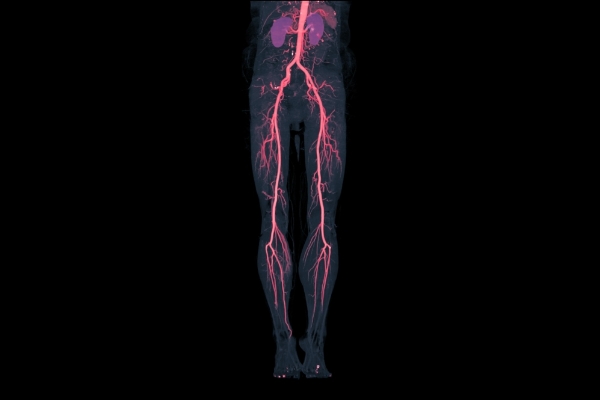Peripheral Arterial Disease
Aorto-iliac revascularization • Femoro-popliteal revascularization • Infra-popliteal revascularization

Common Symptoms
Peripheral Arterial Disease (PAD), or peripheral vascular disease (PVD), is a common circulatory problem in which narrowed arteries reduce blood flow to your limbs. This typically causes pain or cramps in the muscles of the hip, thigh, or calf while standing or walking. It is possible that the pain will subside with rest, but it is likely to return with activity. PAD can limit your ability to exercise or perform important activities and can severely harm your quality of life. If the condition is not treated, PAD may progress to a more severe form, causing skin color changes, ulcers or wounds, and even limb loss.
PAD Treatment
We take a comprehensive approach to the treatment of PAD. We will recommend preventative and non-invasive interventions to stop or delay the progression of disease. When necessary, we perform minimally invasive procedures, utilizing the latest technology and our many years of experience to resolve symptoms and avoid tissue loss or amputation.
We perform minimally invasive procedures for PAD through a very small access channel into the arteries of the groins or feet. Through this small channel, we then navigate our endovascular devices through the arteries to the area of narrowing or obstruction. Often, the most challenging step in the procedure is crossing the narrowed or occluded portion of the artery. This is where a Vascular and Interventional Radiologist excels in comparison to other medical specialties (vascular surgeon or cardiologist) that offer the same treatments because catheter work is what we do all day every day. Once we reach and cross the narrowed or obstructed artery, we may use one or more of the following techniques:
A catheter with a balloon at the tip is placed across the narrowing and then temporarily inflated, resulting in the opening of the obstructed artery and allowing more blood to flow through.
A stent is a metallic mesh structure shaped as a cylinder that is delivered to the area of an arterial narrowing or obstruction. This is left in place permanently to restore or increase blood flow. Generally, this is reserved for cases where angioplasty is not sufficient.
This treatment consists of a specialized catheter that can physically remove fatty and calcified plaques that narrow or obstruct the arteries, restoring blood flow through the diseased artery. Often, this technique is performed in conjunction with angioplasty and/or stenting.
TESTIMONIALS
What Our Patients Are Saying
Dr Gonzalez performed prostate pae surgery on me; he explained everything throughly beforehand and I am having wonderful results from same. Dr Gonzalez and his staff are amazing and caring people and I highly recommend.
David M.
Dr. Gonzalez is amazing. He was able to find a rare condition I have that multiple other physicians did not pick up. He is both caring and knowledgeable. He explained all procedures and outcomes clearly and was available for my questions and concerns even after my procedure. He is a five star doctor and I would highly recommend him!
Adrienne V.
Dr. Gonzalez-Beicos and his staff are very professional, knowledgeable, friendly and caring. After dealing for 10 years with BPH, five biopsies, two TURP and three hospitalizations for complications I want to thank Dr. Gonzalez-Beicos and his team. They did and excellent job with a procedure called Prostatic Artery Embolization. I recovered fast and finally I can say that I’m back to normal. I would and do highly recommend him.
Jorge M.

